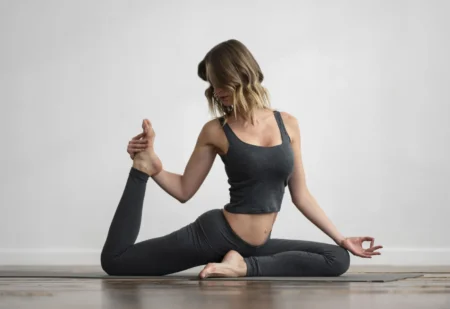 Yoga has been around for thousands of years, yet somehow it feels like it was made for today’s world. In a time when everything moves too fast — work, technology, even thoughts — yoga offers the one thing most people have forgotten how to do: slow down.
Yoga has been around for thousands of years, yet somehow it feels like it was made for today’s world. In a time when everything moves too fast — work, technology, even thoughts — yoga offers the one thing most people have forgotten how to do: slow down.
Its roots trace back to ancient India, long before fitness existed as a concept. The word “yoga” means “union” — the connection between body, mind, and spirit. It wasn’t created to tone muscles or burn calories; it was a practice of awareness. Over centuries, it evolved into a physical, mental, and spiritual discipline that continues to grow across the world.
A Practice, Not a Performance
Modern yoga often looks like flexibility and poses — impressive shapes on Instagram or perfectly aligned postures in studios. But the real purpose is much simpler. It’s not about touching your toes; it’s about learning to feel what happens when you try.
Each breath, each movement, is a conversation between the body and the mind. You notice tension, you notice ease, and you learn to live somewhere between them.
That’s why yoga is called a practice — not a competition. The goal isn’t mastery; it’s presence. You come to the mat to meet yourself as you are, not as you think you should be.
What Yoga Does to the Body
Physically, yoga builds strength and flexibility at the same time — a rare combination. It strengthens deep stabilizing muscles that most workouts ignore. It improves posture, balance, and mobility without strain.
Regular practice helps relieve chronic tension in the neck, shoulders, and back. It supports joint health and keeps circulation smooth. Unlike high-intensity workouts, yoga restores energy instead of depleting it. You finish feeling lighter, not drained.
Even simple breathing exercises — known as pranayama — train the nervous system to stay calm under stress. In a world of constant noise, that’s real power.
The Quiet Effect on the Mind
Yoga doesn’t just reshape the body — it rewires the mind. The slow pace and mindful breathing create a meditative rhythm that softens anxiety and helps focus.
When you hold a pose and breathe through discomfort, you’re not just stretching muscles — you’re practicing patience. You’re learning how to stay steady in situations that would normally trigger stress. That skill translates directly into everyday life.
Many people notice better sleep, clearer thoughts, and a quieter inner voice after a few weeks of regular practice. It’s not mystical; it’s neurological. Breathing deeply lowers cortisol, the stress hormone, and balances the nervous system.
Yoga for Every Body
One of yoga’s greatest strengths is that it belongs to everyone. You don’t have to be young, flexible, or spiritual to benefit from it. The practice adapts to your needs — whether you want to move, recover, focus, or simply breathe.
Gentle forms like Hatha or restorative yoga are perfect for beginners or those with limited mobility. Vinyasa and Ashtanga bring more movement and challenge. Yin yoga focuses on stillness and long holds that release deep tension.
No matter the style, the effect is the same — a sense of calm strength that lasts long after class ends.
More Than Exercise
At its heart, yoga is about remembering that your body and mind are not separate. When one is tense, the other reacts. When one softens, both heal.
That’s why yoga has lasted for centuries — because it speaks a universal truth: balance creates freedom.
You don’t need incense, mantras, or fancy gear to experience that. You just need a little space, a steady breath, and the willingness to listen inward instead of outward.
The Bottom Line
Yoga isn’t about escaping life — it’s about learning to meet it differently. It teaches strength without aggression, calm without passivity, effort without exhaustion.
In a world that demands constant motion, yoga reminds you that stillness is also a kind of power.
And sometimes, the most productive thing you can do is pause — inhale, exhale, and remember that being here, now, is enough.
Picture Credit: Freepik
